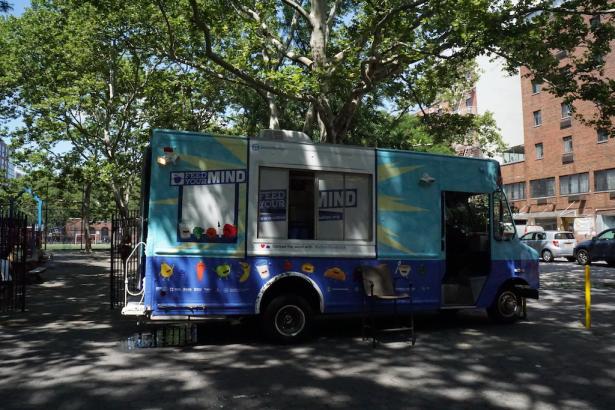In the 2017-2018 school year, about 200,000 more students qualified for free summer lunches compared with the year prior. One would expect such an increase to correspond with a proportional rise in participation, right? Wrong. According to a new report published by the Food and Research Action Center (FRAC), an anti-hunger advocacy group, the opposite happened.
During the academic year, the Department of Agriculture’s (USDA) National School Lunch Program feeds over 30 million kids across the country—three-quarters of whom qualify for free or reduced-price meals. When school is out, USDA’s summer feeding programs are supposed to keep filling the nutritional gap in low-income areas.
In reality, however, the number of students who eat free meals during the summer has been on a steady decline for several years. In July 2018, just 14.1 percent of children and teenagers who were eligible for free or reduced-price lunches during the school year received them during the summer break. That comes out to about one kid eating a summer meal for every seven who qualify.
Free summer meals can mitigate the physical and emotional toll of food insecurity.
According to past reports issued by FRAC, participation in summer feeding programs has been dropping steadily since 2014, when participation was at a relative high of 16.2 percent. In summer 2015, it dropped to 15.6 percent. In 2016, it dipped again to 15 percent, a value that held steady in the summer of 2017. FRAC’s numbers are calculated by dividing total participation in USDA various summer feeding programs by school lunch participation during the school year, data which USDA provides FRAC directly and which isn’t available on its website.
Summer break can pose an unexpected financial burden on families whose kids typically eat lunch at school. Free summer meals can mitigate the physical and emotional toll of food insecurity, which can put students at an academic disadvantage in the long run.
“I always use the food truck when I don’t have money and I’m hungry,” one child told NFE last summer in a story about New York City’s summer meal distribution program. In NYC—where enough students qualify for free or reduced price lunch that meals are free to all during the school year—officials situate food trucks in popular parks in an effort to feed kids where they’re most likely to be while school is out of session.
USDA’s summer feeding programs work by providing funding to local organizations—including schools, churches, and camps—to distribute free meals to kids in their community as long as certain income eligibility requirements are met. Generally speaking, at least half of the children residing in a geographic area or participating in a program must qualify for free or reduced price lunch in order for a given site to receive funding.
But not all summer lunch programs operate in the same way, and they can vary wildly in terms of efficacy. In New York state, 27.1 percent of qualified students get free summer lunch. Other states where summer meal programs see similar or higher participation rates include Vermont (31 percent), Maine (27.4 percent), and the District of Columbia (34.5 percent). On the other end of the spectrum are states that see far lower success, including Texas (7.2 percent) and Oklahoma (5.5 percent).
Summer break can pose an unexpected financial burden on families whose kids typically eat lunch at school.
Low participation is likely the result of a confluence of factors, including a lack of accessible meal distribution locations, inadequate information about free meals, and transportation barriers. Due to lower populations, schools in rural areas can have student bodies that span across many communities—which may obscure high poverty rates within some of them, says Crystal FitzSimons, director of school and out-of-school time programs for FRAC.
“A lot of rural schools have larger catchment areas and so they draw kids from lots of different areas and so they’re more likely to pull in a more diverse group of kids,” FitzSimons says.
To mitigate this, FRAC advocates that income requirements required for a region to qualify for universal free school lunch be lowered from 50 percent to 40 percent. Other suggestions including greater investments in summer feeding programs and reducing the amount of paperwork that organizations have to fill out in order to operate lunch sites.
These are changes that Congress can push through by revising laws that govern child nutrition programs—including summer meals, school lunch, and nutrition assistance for women, infants, and children—which were last updated in 2010.


Spread the word